Birds of a Feather
Which Bird might I see today? – WINTER
Doves
Even if you don’t feed birds in winter, you are probably familiar with the doves, which are here year-round. I won’t bore you with statistics about the feral Rock Dove or Pigeon, a very common urban species that everyone knows. Instead let’s take a closer look at our other two dove species, Mourning Dove and Eurasian Collared Dove and try to highlight the differences between them.
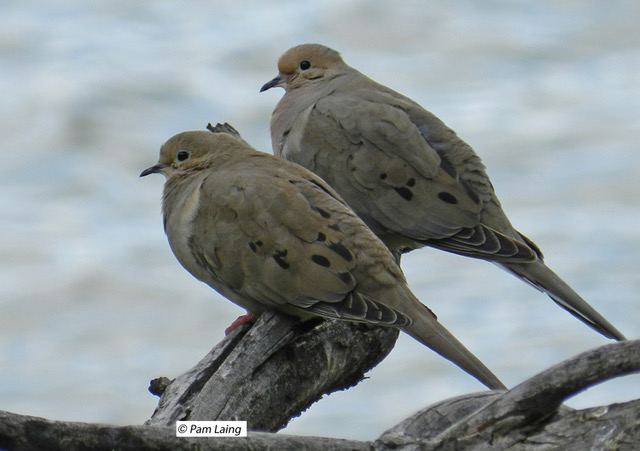
Mourning Doves are abundant, found all across southern Canada and throughout the US. More are seen in our valley during the summer months than in winter, as many migrate southward in search of food in harsh weather. These are long, plump, small-headed birds, varying in size from 9 – 13”/~23 – 34 cm. Birds are browner in the east and greyer in the west. The breast is a pale rosy grey, there are black spots on the wings and the tail is long and pointed, forming a white-edged fan when the bird flies. The song is a mournful hooting, hence the species name. Often non-birders think they are hearing an owl. Flight feathers produce an airy whistling sound when the birds fly past.
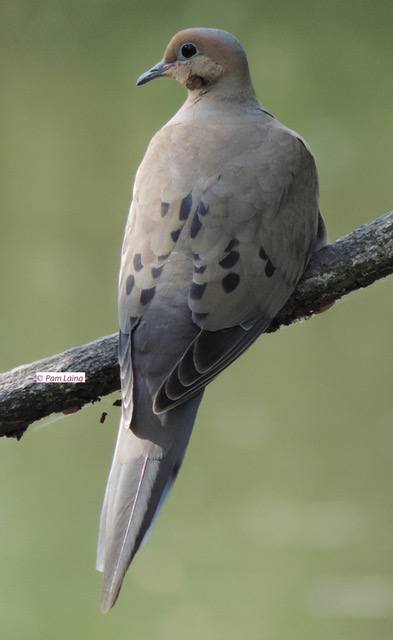
Mourning Doves breed in a wide variety of habitats but do not frequent extensive forests preferring farmland, suburbia, small woodland lots, or creekside trees. Two eggs are laid on a flat, flimsy nest platform, occasionally on the ground, and two broods are raised each year. Pairs mate for life. Mourning Doves forage for seeds mainly on the ground, but will also visit platform feeders. They glean in grain fields after harvests are gathered. Eurasian Collared Doves are stockier birds, ~11 1/2 – 12”/29 – 30 cm. With a black collar on the back of its neck, no wing spots and a square tail, a beak that is more robust than the thin one of the Mourning Dove and a strong, swift flight reminiscent of hawks, these birds are significantly different. Eurasian Collared Doves sound very different from Mourning Doves. I grew up in England with their somewhat monotonous four-note low-pitched calls, and the harsh nasal sneer they emit when flying. There is no wing whistle.
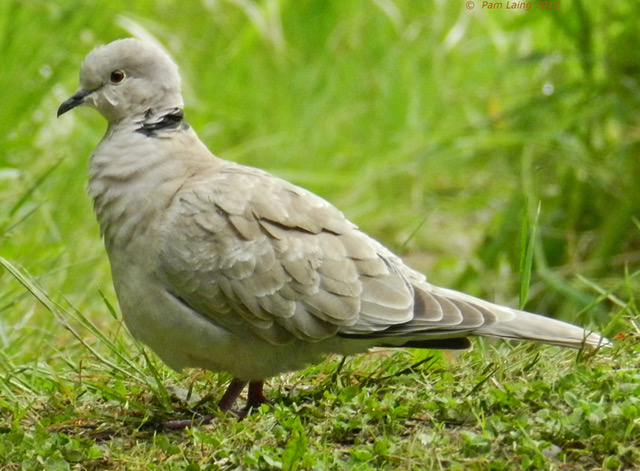
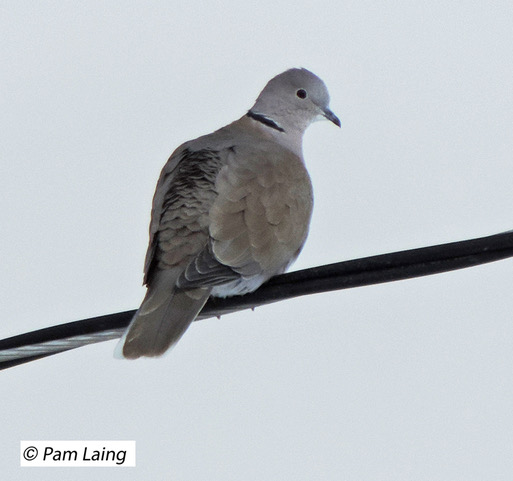
They are becoming so common here that it is hard to realize that they were only introduced to south-eastern North America a matter of a few decades ago! As the species name indicates, they are native to Asia and Europe, spreading rapidly westwards there during the early twentieth century. Why such a fast expansion of range? Eurasian Collared Doves raise multiple broods a year, three at least. They are very tolerant of humans, regularly nesting and feeding in urban areas. So as cities developed and spread over the past century, so did the birds. Although one of my bird books published in 2010 states that they do not nest in the northern forests, I have seen them in the West Chilcotin in B.C., in the middle of Strathcona Provincial Park and on the north coast of Vancouver Island, areas not known for their urban centres! Spreading they certainly are. In addition to their fast breeding rate, they have a more varied diet than that of the Mourning Dove. While seeds are preferred, and they will come to feeders for sunflower seeds or mixed grains, they also take plant stems and leaves, berries and even some invertebrates. No wonder they are proving so successful at colonizing the continent!
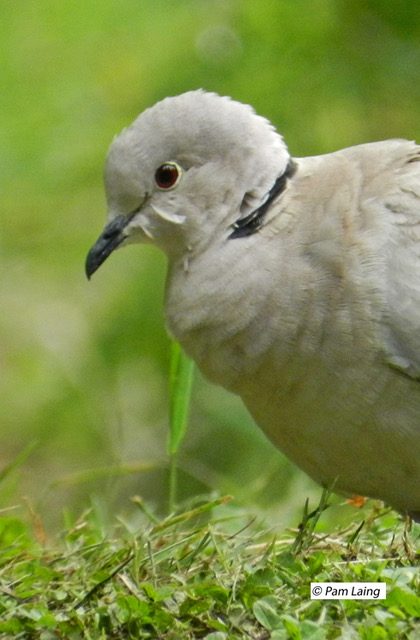
They are becoming so common here that it is hard to realize that they were only introduced to south-eastern North America a matter of a few decades ago! As the species name indicates, they are native to Asia and Europe, spreading rapidly westwards there during the early twentieth century. Why such a fast expansion of range? Eurasian Collared Doves raise multiple broods a year, three at least. They are very tolerant of humans, regularly nesting and feeding in urban areas. So as cities developed and spread over the past century, so did the birds. Although one of my bird books published in 2010 states that they do not nest in the northern forests, I have seen them in the West Chilcotin in B.C., in the middle of Strathcona Provincial Park and on the north coast of Vancouver Island, areas not known for their urban centres! Spreading they certainly are. In addition to their fast breeding rate, they have a more varied diet than that of the Mourning Dove. While seeds are preferred, and they will come to feeders for sunflower seeds or mixed grains, they also take plant stems and leaves, berries and even some invertebrates. No wonder they are proving so successful at colonizing the continent!
So next time you see a dove perched on your feeder or on the wires overhead, take a closer look. Is it a Mourning Dove or a Eurasian Collared Dove?







0 Comments